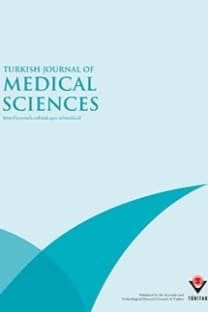Interleukin-6 and hepcidin expression changes in cardiac tissue of long-term trained and untrained rats after exhaustive exercise
Hepcidin, interleukin-6, heart, exhaustive exercise,
- ISSN: 1300-0144
- Yayın Aralığı: 6
- Yayıncı: TÜBİTAK
Gülsün AKAY, Kahraman GÜNGÖR, İlkay PEKER
Alper DİLLİ, Fatma Sevin Coşar AYAZ, Keziban KARACAN, Kürşad ZENGİN, Ümit Yaşar AYAZ, Osman Raif KARABACAK, Baki HEKİMOĞLU
Bahadir BATAR, Sezen ÖZMAN, Kenan BARUT, Özgür KASAPÇOPUR, Mehmet GÜVEN
Bahadir BATAR, Sezen ÖZMAN, Kenan BARUT, Özgür KASAPÇOPUR, Mehmet GÜVEN
Soner Sertan KARA, Hasan TEZER, Çağrı DAMAR, Meltem POLAT, Ayşe Gül ALIMLI, Betül Emine DERİNKUYU, Öznur BOYUNAĞA, Çiğdem ÖZTUNALI, Anıl TAPISIZ AKTAŞ, Murat UÇAR
Prediction of central lymph node metastasis in patientswith thyroid papillary microcarcinoma
Serkan AKIN, Mehmet KILIÇ, Miyase BAYRAKTAR, Şafak AKIN, Duygu YAZGAN AKSOY, Fahri YETİŞİR
Murat ÖZ, Mustafa Alper KARALÖK, Ali Levent ŞİRVAN, Tolga TAŞÇI, Reyhan ÖÇALAN, Ahmet Taner TURAN, TAYFUN GÜNGÖR, Mehmet Mutlu MEYDANLI
Berat Dilek DEMİREL, Ünal BIÇAKCI, Riza RIZALAR, Ferda Alpaslan PINARLI, Oğuz AYDIN
The reno-protective effects of atorvastatin in crush syndrome and rhabdomyolysis:is there a dilemma?
Başar CANDER, Ahmet ÇAĞLAR, Demet ACAR, Emine Nur ÖZDAMAR, Mustafa GÜLPEMBE, Can Gökay YILDIZ, Kerem AÇIKGÖZ
